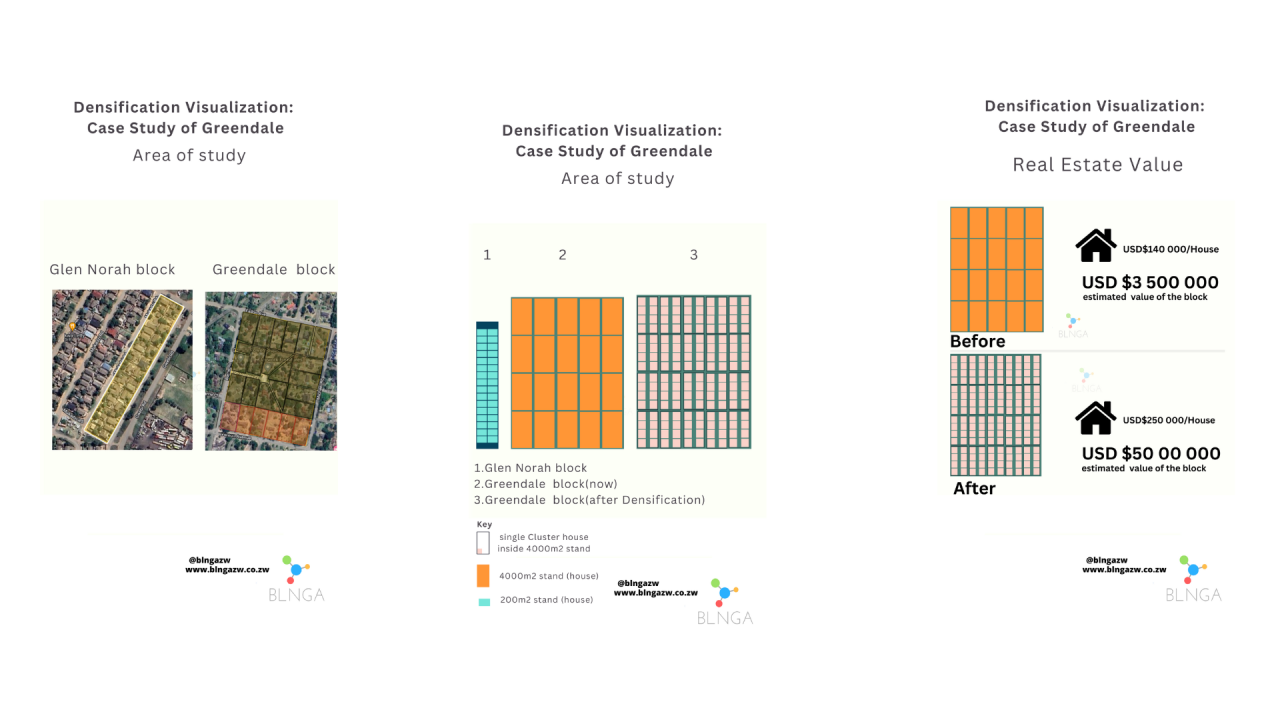
Visualizing and Analyzing the Impact of Urban Densification in Harare: A Case Study of Greendale
Urban densification is a hot topic in Harare, sparking debates on how increasing population density in different areas can reshape the city. I've been following this discussion closely and have taken a deep dive into its implications for various aspects of city life, including sanitation, energy, transportation, and real estate. Using scale diagrams, I've compared blocks in both high-density and low-density areas, focusing on how these dynamics change before and after densification. My case study zeroes in on Greendale.
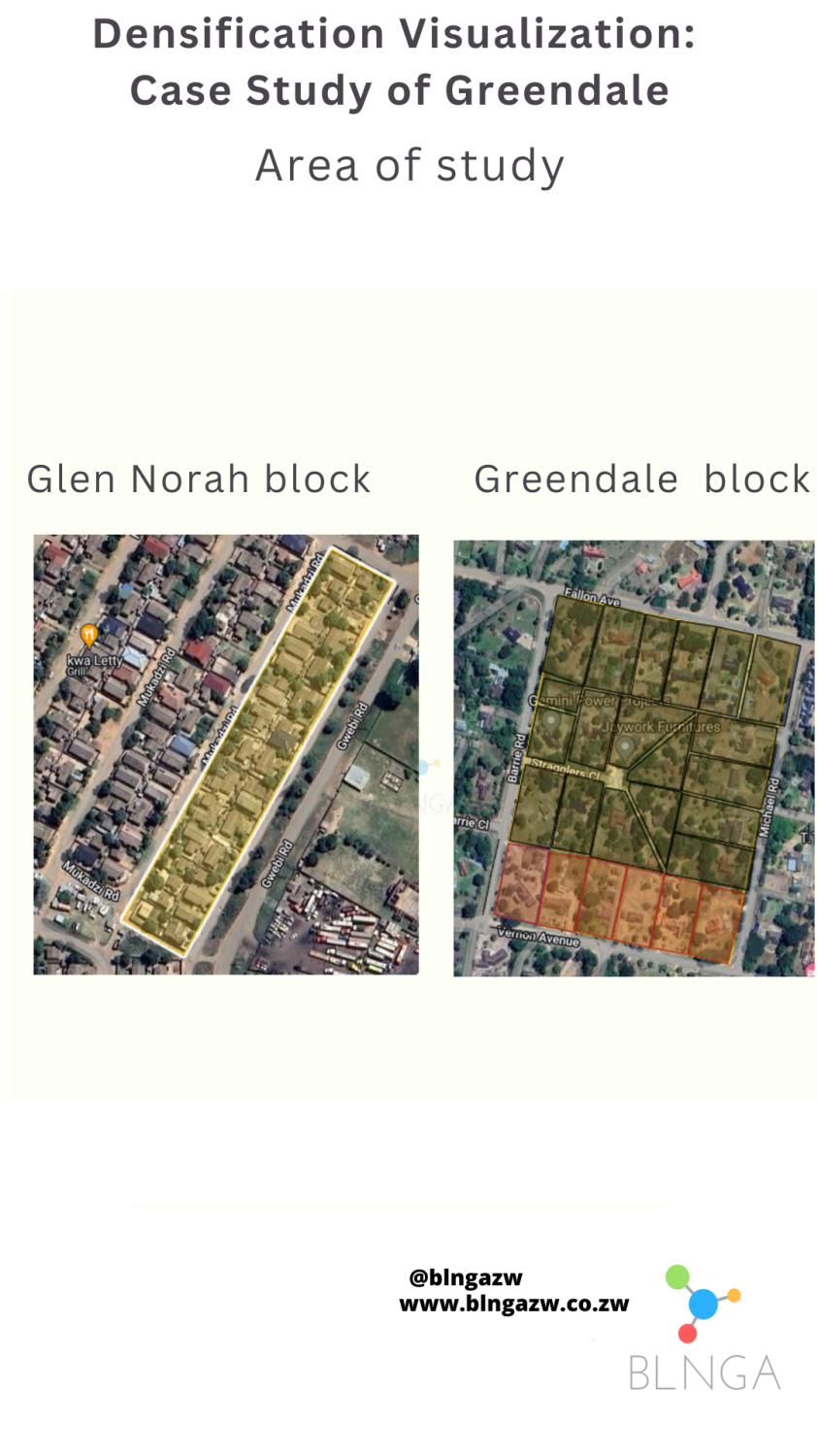 Satellite image of Greendale compared to Glen Norah
Satellite image of Greendale compared to Glen Norah
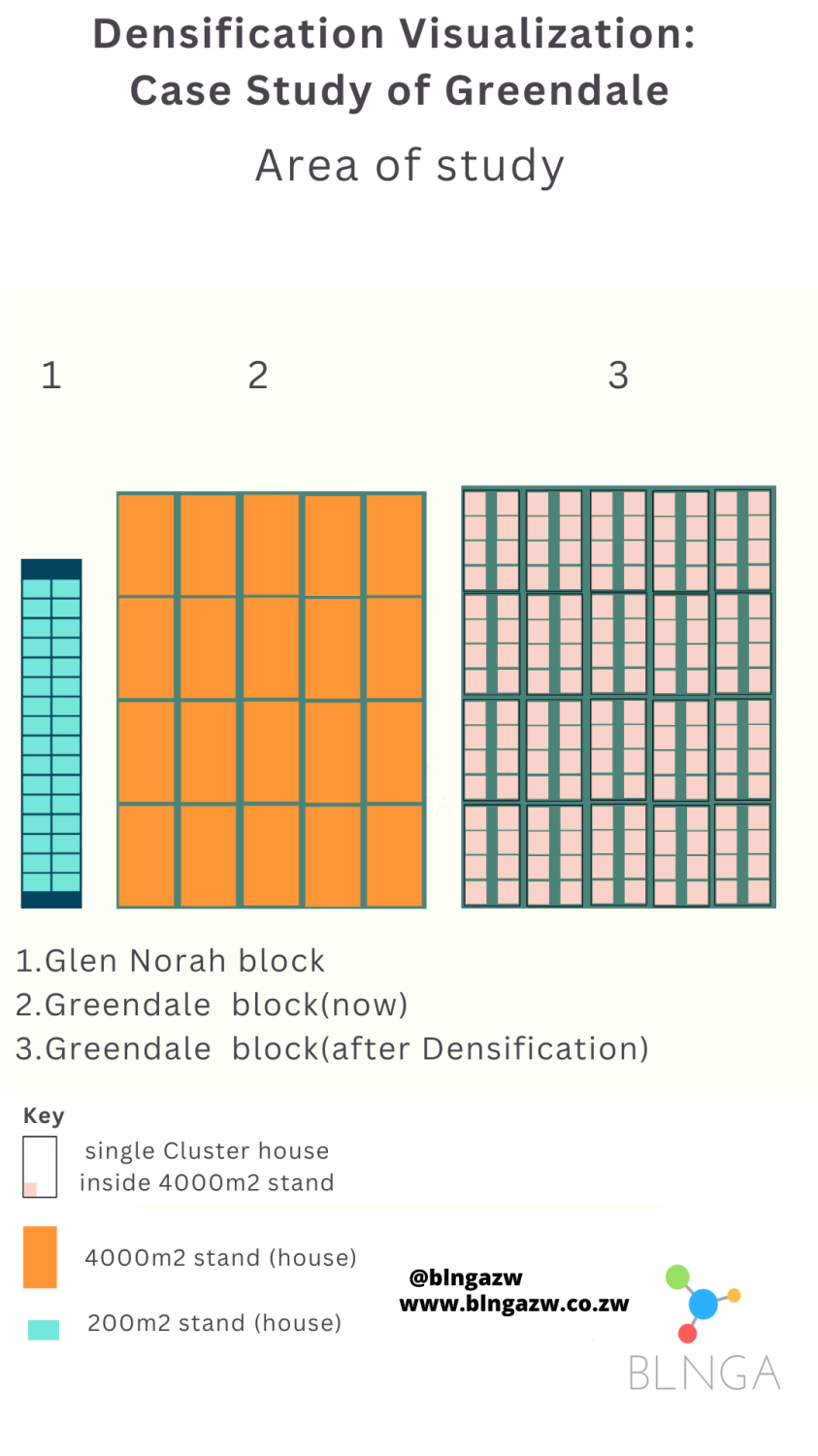 Scale illustration of Greendale compared to Glen Norah
Scale illustration of Greendale compared to Glen Norah
Sanitation: A Surge in Water and Wastewater Demand
One of the most significant impacts of urban densification is on sanitation infrastructure. In Greendale, a low-density area, the demand for drinking water per block is set to skyrocket from 500 liters to 4,000 liters as population density increases. Similarly, daily wastewater production is expected to surge from 2,500 liters to a staggering 20,000 liters. Refuse generated is set to go from 125kg a week to 1000kg a week for a given block. These figures highlight the pressing need for robust sanitation systems that can cope with the demands of a denser urban population.
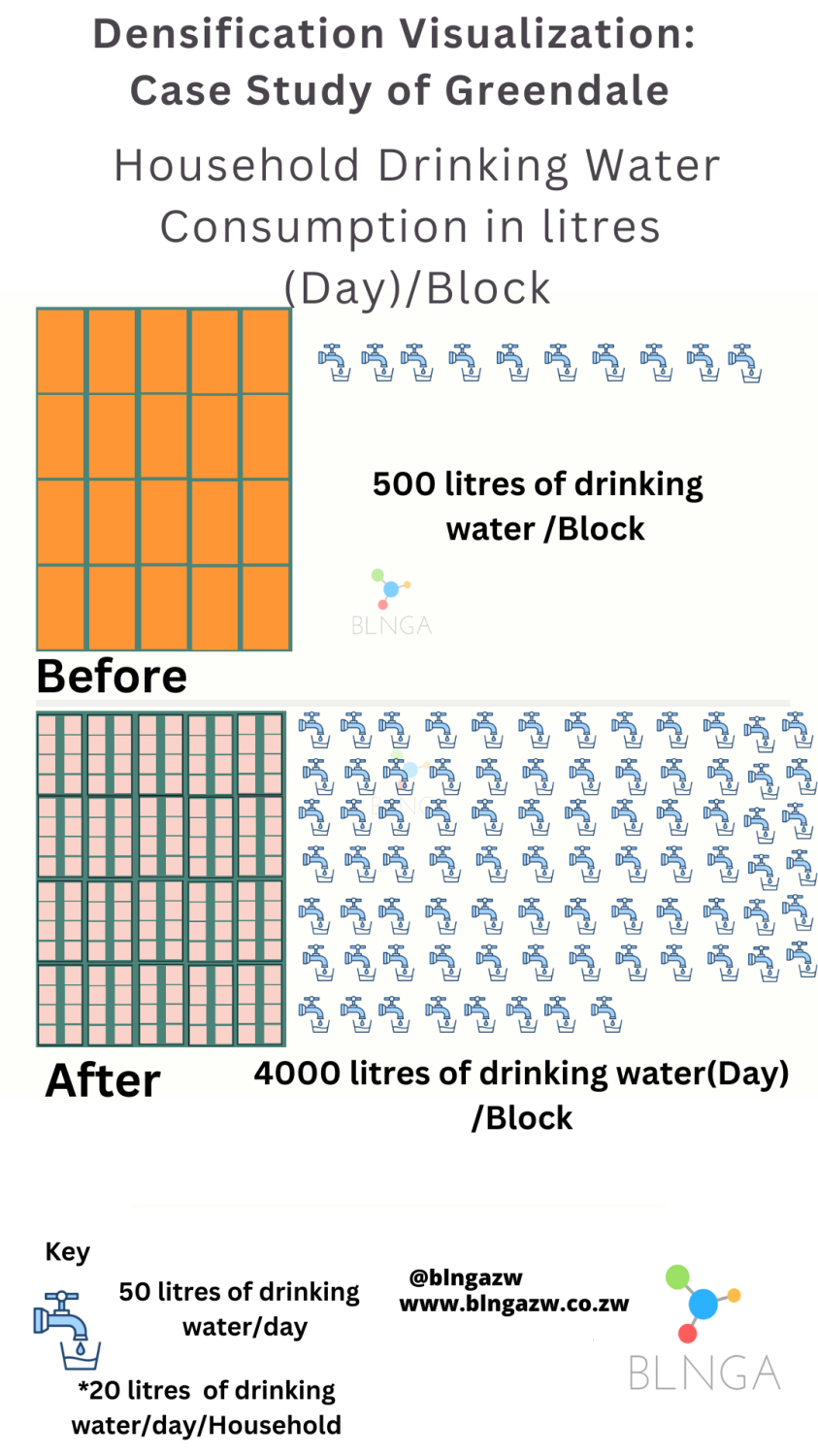 Effect of densification on drinking water requirements
Effect of densification on drinking water requirements
 Effect of densification on wastewater production
Effect of densification on wastewater production
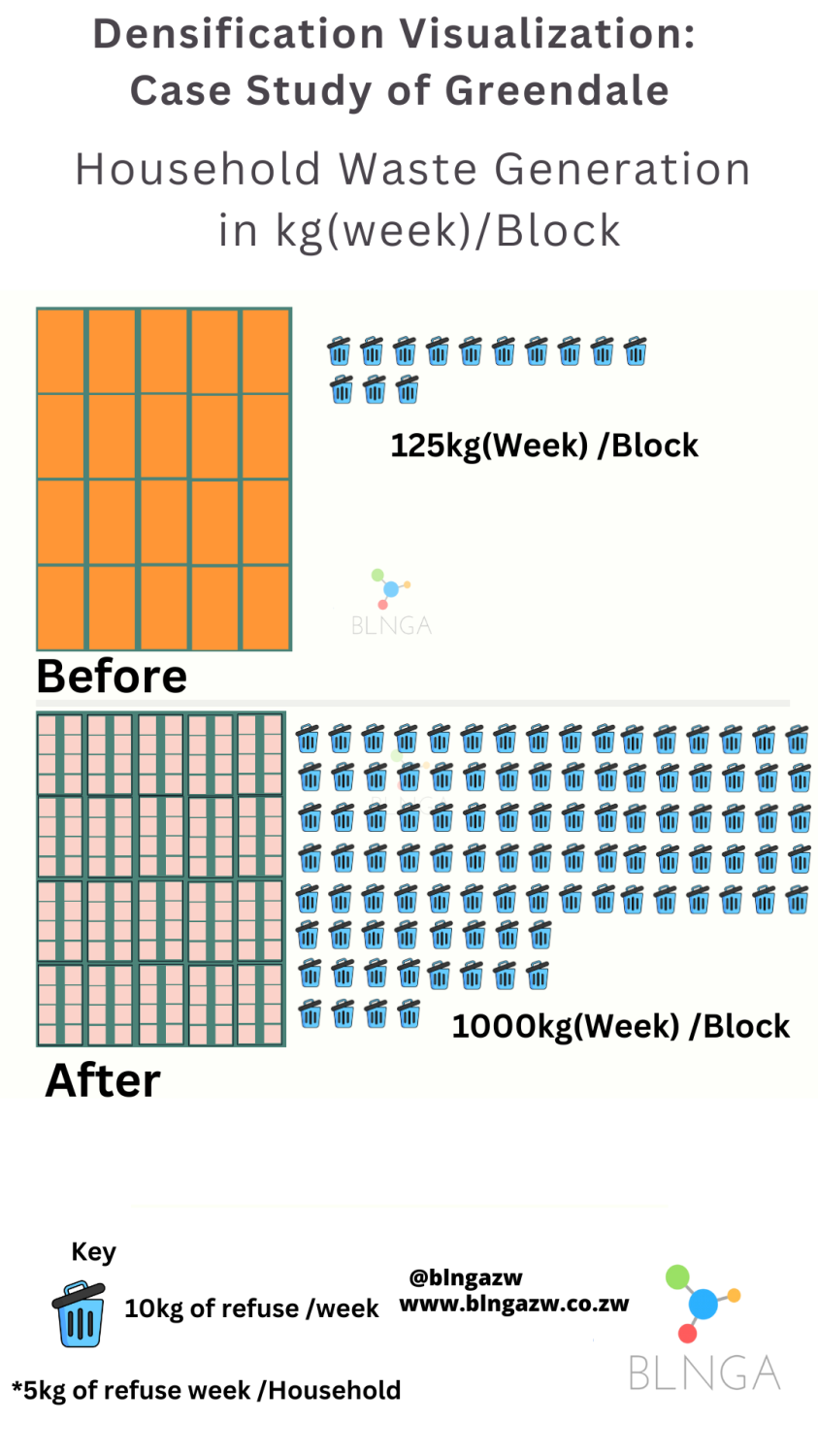 Effect of densification on refuse generation
Effect of densification on refuse generation
Energy: Balancing Increased Demand with Solar Potential
Energy consumption is another critical area affected by densification. For a typical block in Greendale, daily energy demand is projected to increase from 50 kWh to 400 kWh. However, there's a silver lining: the potential for solar energy production will also rise significantly, from 150 kWh/day to 1,200 kWh/day. This increase presents a unique opportunity to harness renewable energy sources to meet the growing demand and reduce reliance on non-renewable resources.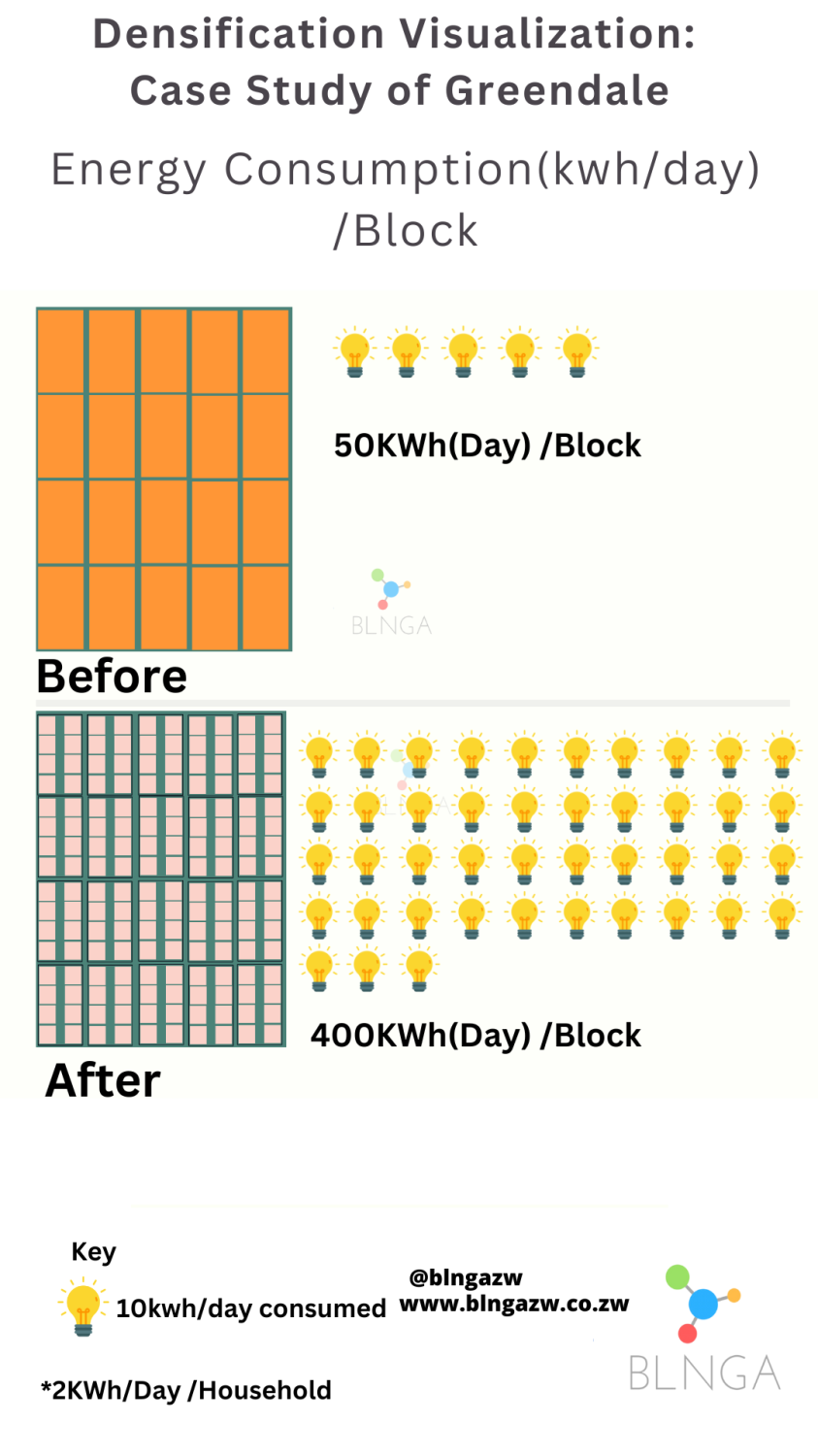 Effect of densification on energy consumption
Effect of densification on energy consumption
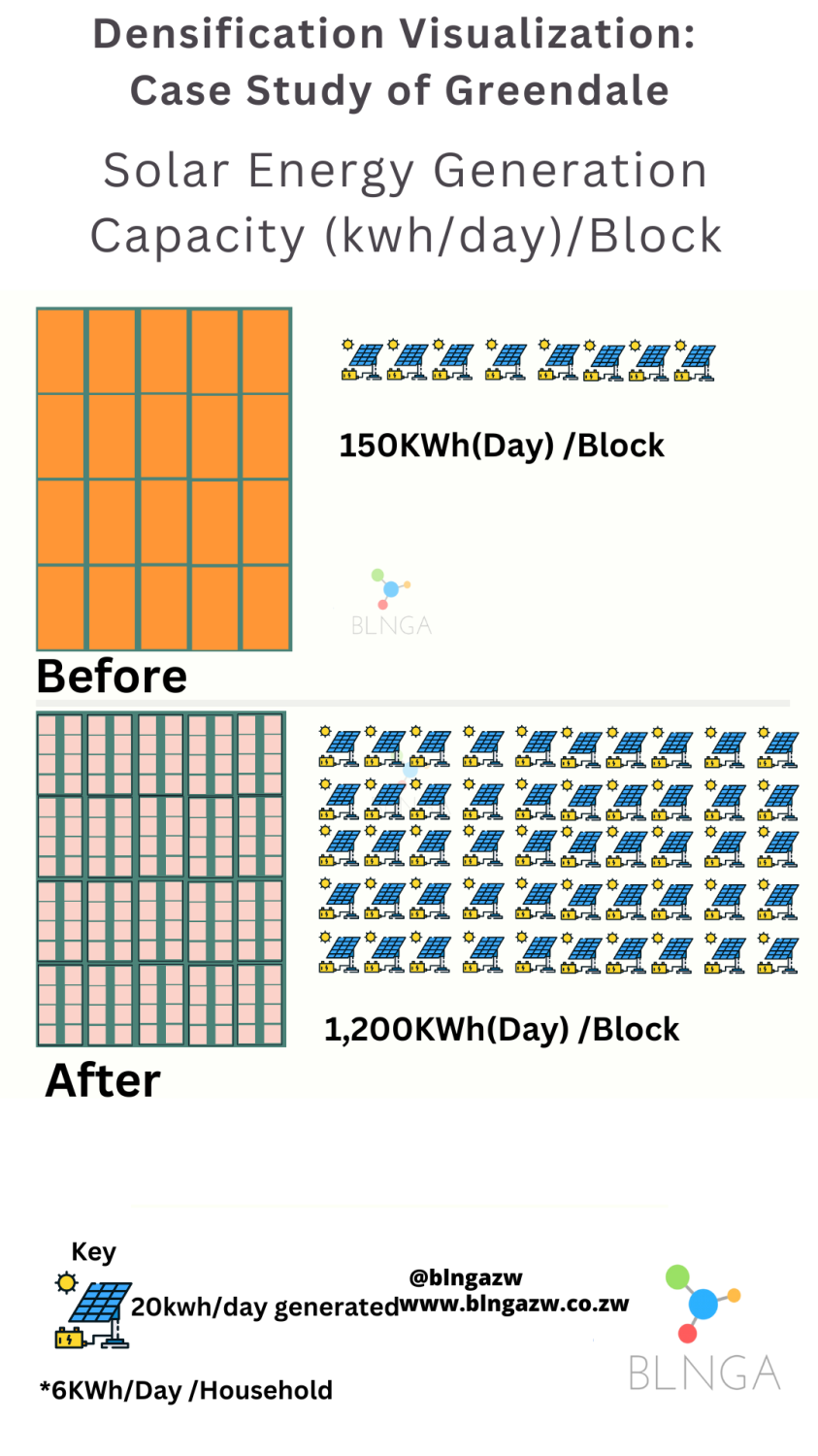 Effect of densification on potential energy production
Effect of densification on potential energy production
Transportation: Escalating Needs and Car Ownership
As urban areas become more densely populated, transportation needs will naturally expand. In Greendale, the number of daily trips demand per block is expected to grow from 100 to 800, reflecting a significant increase in mobility requirements. Additionally, car ownership per block is projected to rise from 25 to 125, underscoring the need for enhanced transportation infrastructure and planning to accommodate this growth.
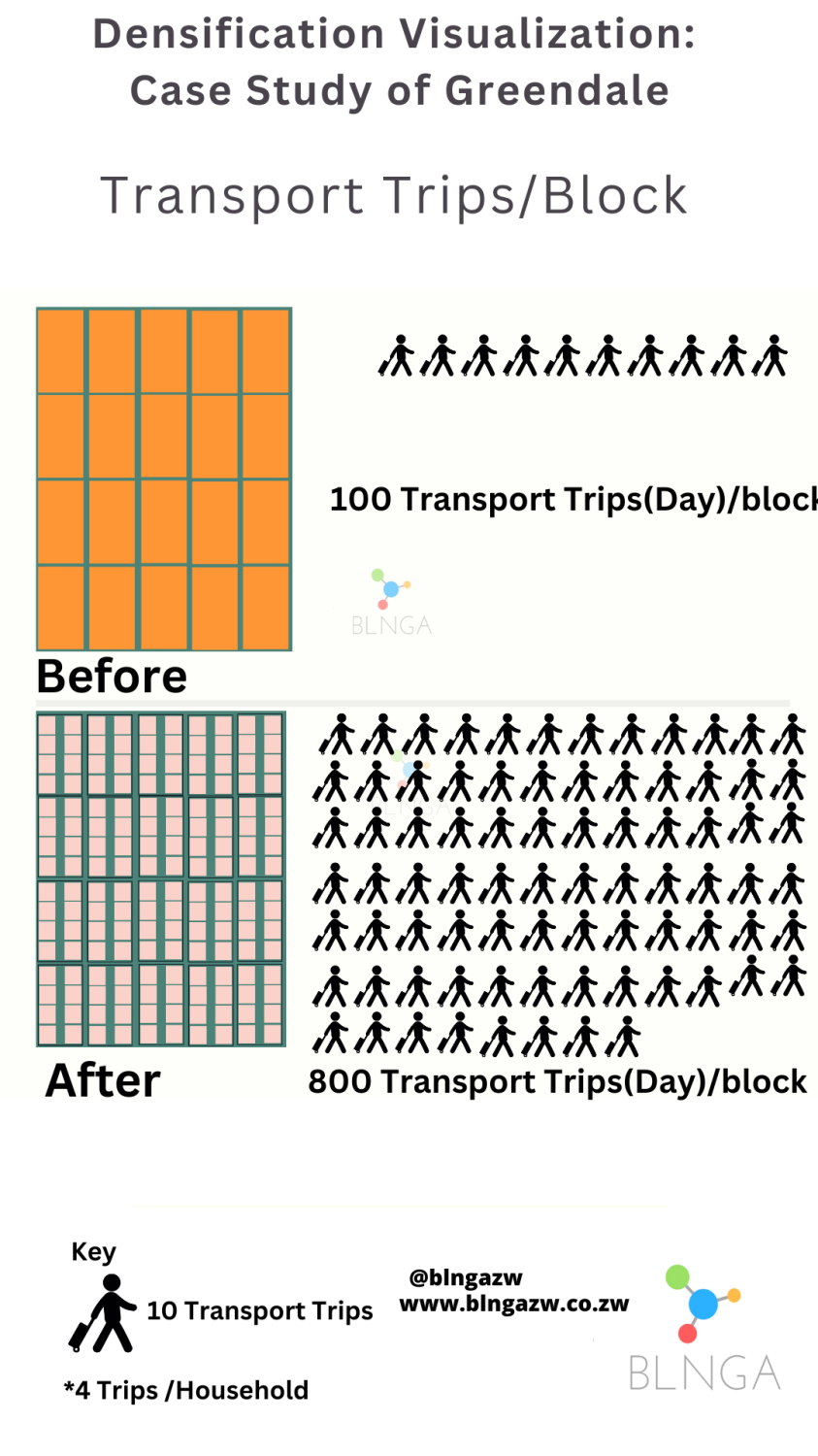 Effect of densification on daily trips demand
Effect of densification on daily trips demand
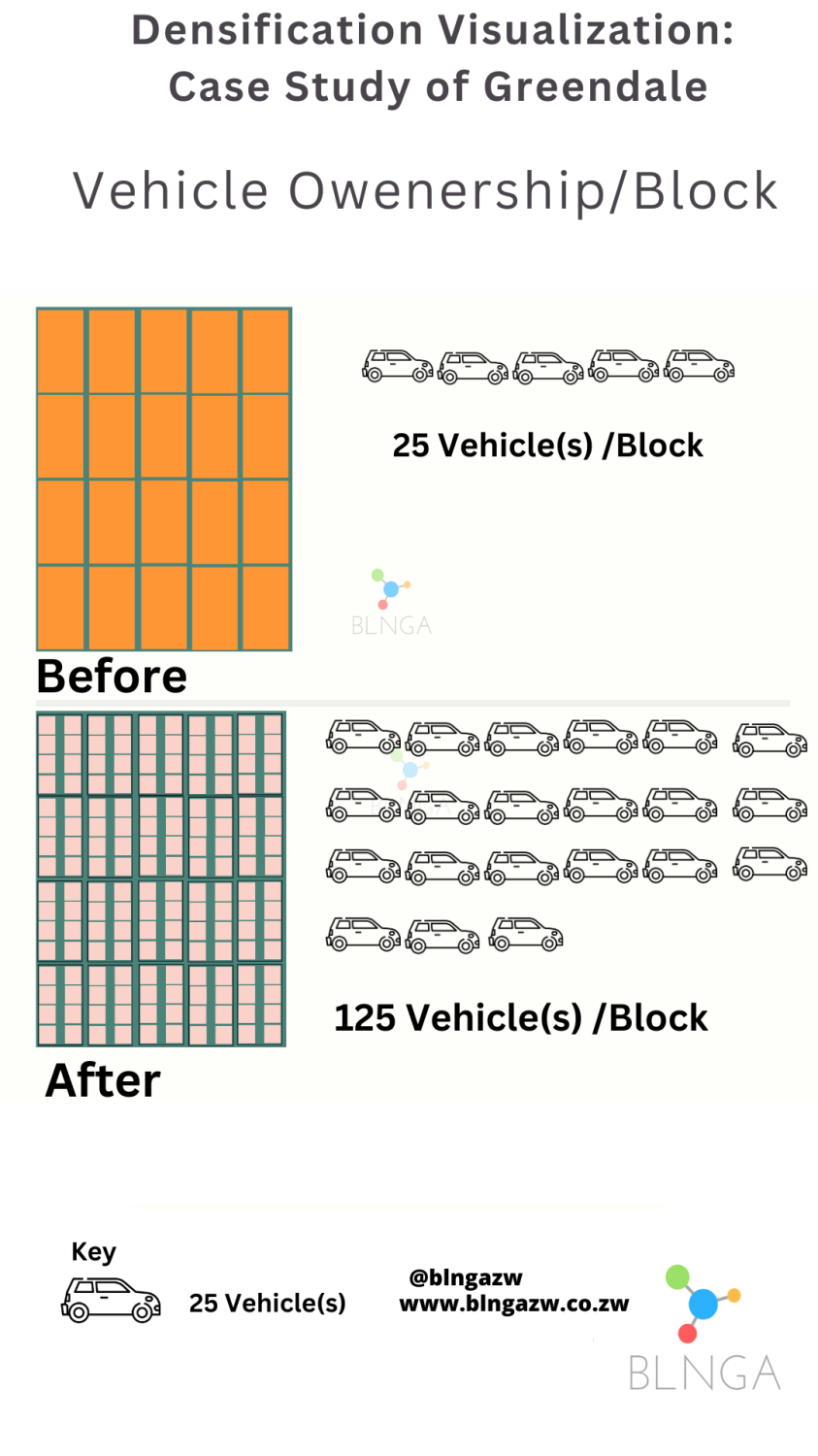 Effect of densification on car ownership
Effect of densification on car ownership
Real Estate: A Dramatic Increase in Property Value
The real estate market is perhaps the most directly affected by urban densification. Based on current market prices, the value of real estate per block in Greendale is anticipated to soar from USD $3 million to an astonishing USD $50 million. This dramatic increase in property value is indicative of the economic potential that densification brings to urban areas, though it also raises questions about affordability and accessibility for residents.
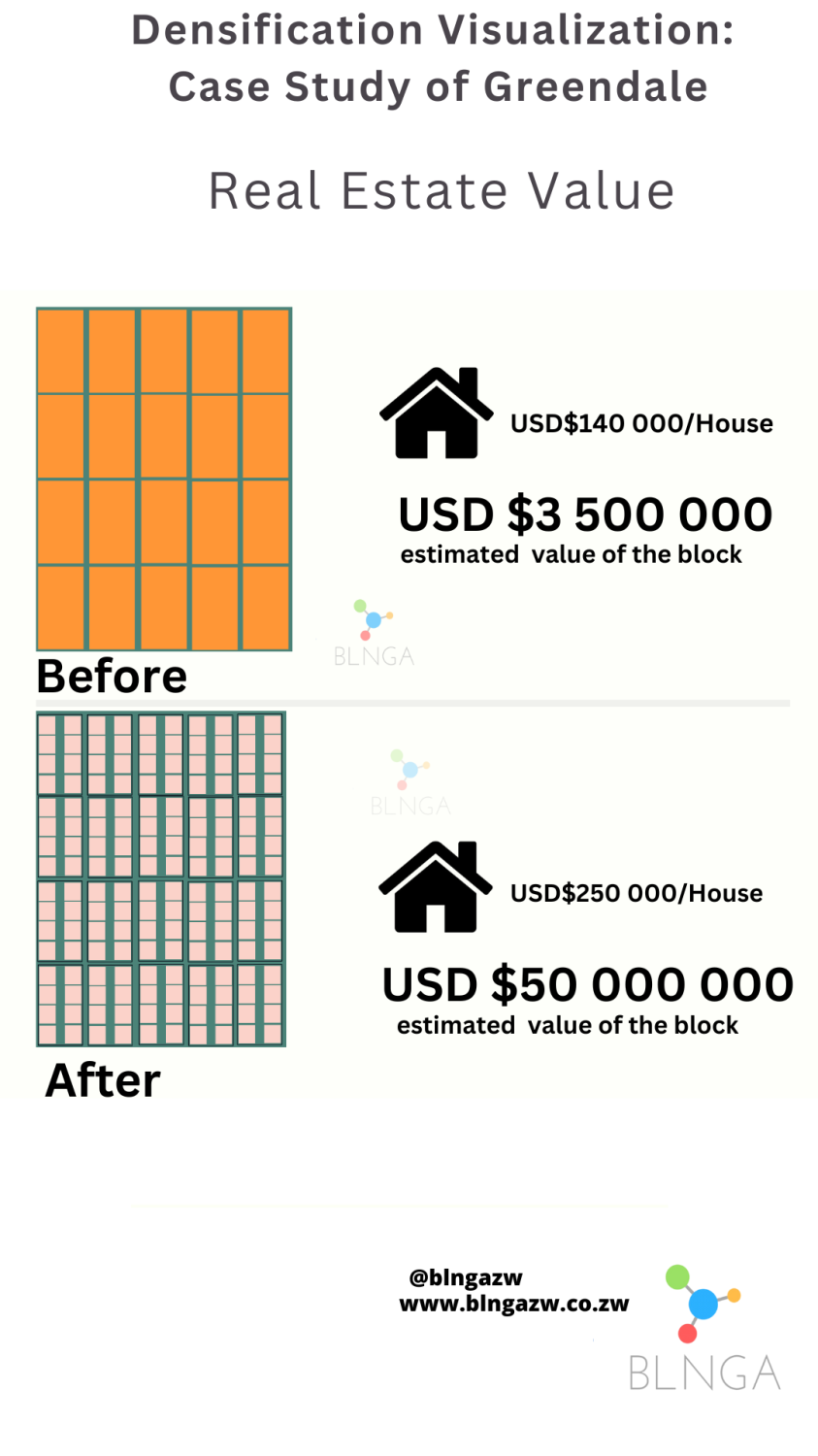 Effect of densification on real estate value
Effect of densification on real estate value